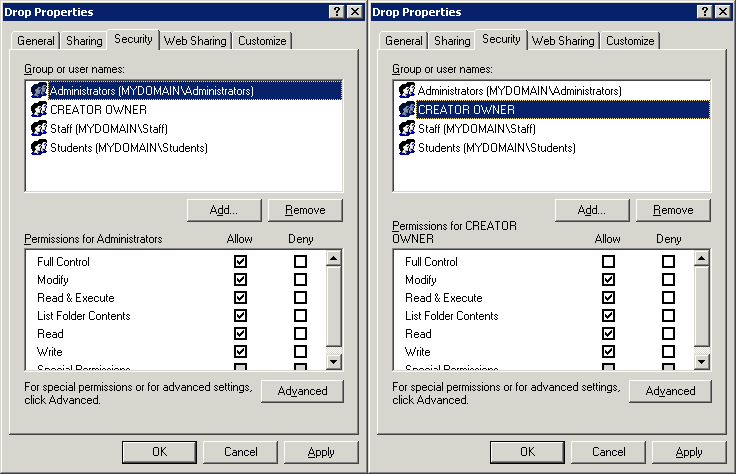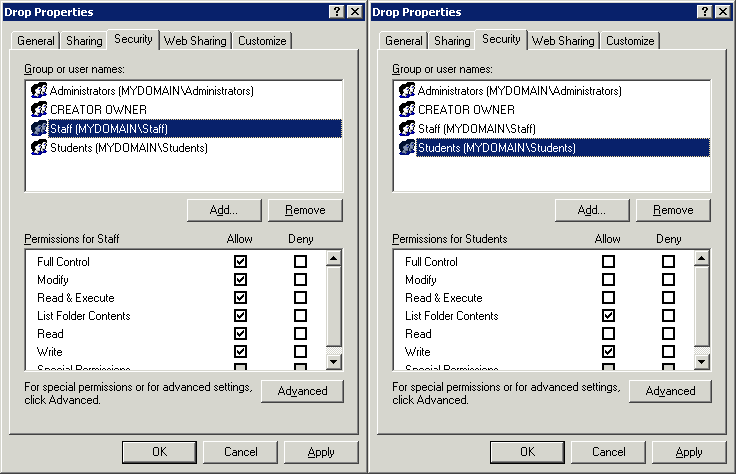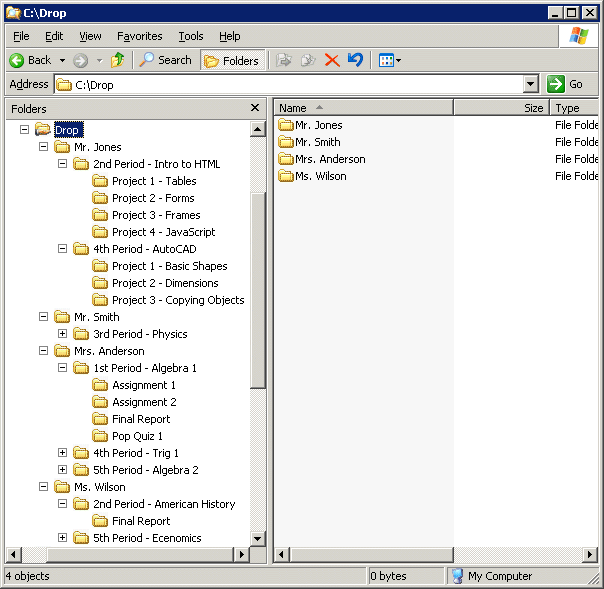This concept probably doesn't apply much to a business, but it is very handy for schools.
Scenario: A high-school teacher assigns a project to a class of students. They are to turn in their assignment for grading in a digital format. In the past, floppy disks were commonly used, but they suck. What we want is a common folder that students can save their work to on a file server. We want the teachers to have full access to the files. We want the students to be able to see what folders and files are there, but not read any of the files. We wouldn't want students stealing ideas and such from other student's files now would we. We do want students to be able to create files here though. If we want to get advanced, we can use the Creator/Owner account to allow students to read/edit/delete their own files too.
As for folder structure inside the drop folder, this can be about anything. Not all teachers will use a drop folder so you don't need to create folders for all teachers. For an example though, let's say Teacher A has 3 computer classes. Each class has separate assignments and needs to put their stuff in the correct folders. Inside the drop folder we have a folder for Teacher A. Inside that folder, we have 3 folders for each of the classes. Inside each class folder, we have a folder for the specific assignment that the students are working on. Inside the assignment folder, tell the students to create their assignment file and name it with their name. This way the teacher has all the students' files in one location for this one assignment.
Note: We only set rights at the main Drop folder level. All rights get inherited down into any folder that gets created.
Rights for Administrators and Creator Owner:

Rights for Staff and Students:

Here is an example folder hierarchy of how the staff could use a drop folder:

Last updated: August 20, 2005

